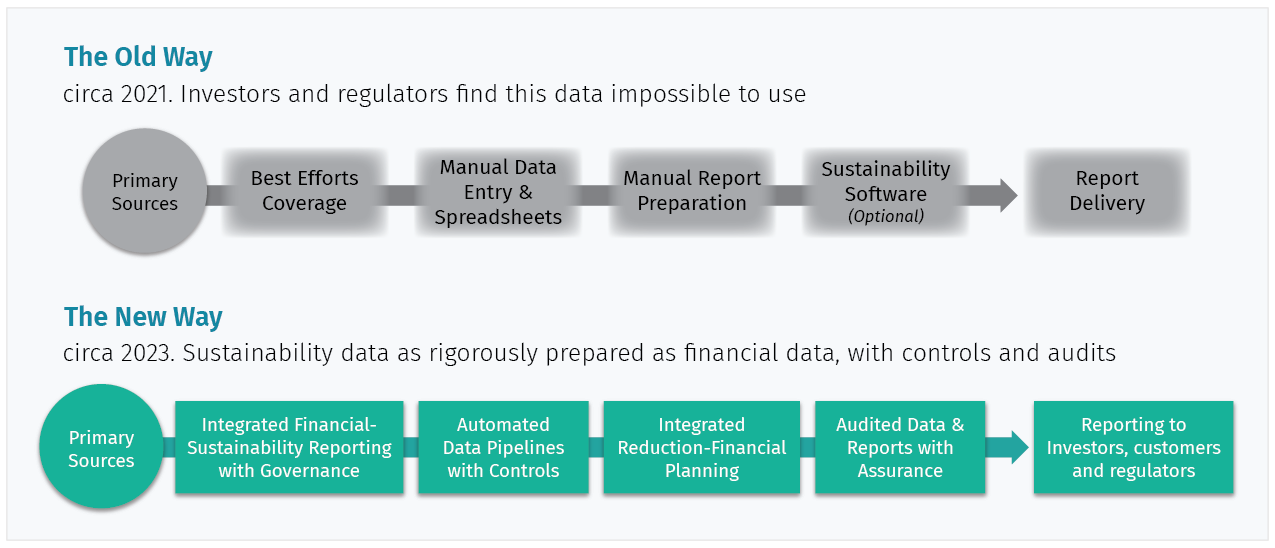Part 1: The New Mandate: Integrated Financial-Sustainability Reporting
For years sustainability teams have been siloed from finance teams, each using different terms and processes to do their jobs. And this has led to a cacophony of words, but little shared understanding. To cut through this noise, we start with a simple graphic that compares how sustainability data has been prepared in the recent past, e.g. 2021, and how it will be prepared in the future, e.g. starting in 2023. The key change is the arrival of integrated financial-sustainability reporting, in which sustainability data is prepared in the same manner as financial data, and is prepared so that it aligns with corresponding financial data.
Integrated Financial-Sustainability Data Preparation and Reporting Has Arrived

To emphasize how important integrated reporting is, the global accounting standards body, IFRS, changed its self-description to: “…a not-for-profit, public interest organization established to develop …globally accepted accounting and sustainability disclosure standards.”
